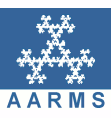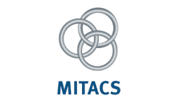 |
|
||||
Org: Alejandro Adem (UBC) et Jong Hae Keum (KIAS)
[PDF]
- ALEJANDRO ADEM, University of British Columbia
Commuting Elements and Simplicial Spaces of Homomorphisms [PDF] -
Using spaces of homomorphisms and the descending central series of the free groups, simplicial spaces are constructed for each integer q > 1 and every topological group G, with realizations B(q,G) that filter the classifying space BG. In particular for q=2 this yields a single space B(2,G) assembled from all the n-tuples of commuting elements in G. Related stable splittings for spaces of commuting elements in a compact Lie group will also be discussed.
- HANS BODEN, McMaster University
Metabelian SL(n,C) representations of knot groups [PDF] -
In this talk, which is a report on joint work with Stefan Friedl, I will explain why, for n prime (or more generally n a prime power), every irreducible metabelian SL(n,C) representation of a knot group factors through a finite group. It is a consequence that every such representation is conjugate to an SU(n) representation and that there are only finitely many (up to conjugation). I will present a simple formula for this number in terms of the Alexander polynomial of the knot. This result is the natural n > 2 generalization of a result of Nagasato on metabelian SL(2,C) representations of knot groups.
- PATRICK BROSNAN, University of British Columbia
Essential dimension of gerbes over complete local rings [PDF] -
Essential dimension is a notion invented by Joe Buhler and Zinovy Reichstein to measure the number of parameters required to define an algbraic object. In my talk, I'll define the essential dimension of a stack and state a "genericity theorem" which computes the essential dimension of a smooth Deligne-Mumford stack as the sum of the essential dimension over the generic point in the course moduli space and the dimension of the course moduli space. I'll give a more precise theorem that holds when the stack is a gerbe over a complete local ring.
This is joint work with Zinovy Reichstein and Angelo Vistoli.
- JAE CHOON CHA, POSTECH
Torsion in link concordance and Hirzebruch-type invariants from iterated p-covers [PDF] -
We obtain invariants of topological homology cobordism of 3-manifolds and link concordance from iterated p-covers. Our invariants have values in certain L-groups and can detect torsion which is invisible via signature invariants. We also show that the invariants can extract information from arbitrarily higher terms of the derived series of the fundamental group. Applications include the first proof of the conjecture that the Bing double of the figure eight knot is not slice.
- OCTAV CORNEA, University of Montreal, Montreal, QC
Numerical Invariants for Lagrangian Submanifolds [PDF] -
We show that the understanding of certain natural algebraic invariants associated to a class of Lagrangian submanifolds (called wide) is intimately related to certain number theoretic questions via the theory of quadratic forms. This relation is significant because it offers a conceptual perspective on the definition of some enumerative invariants involving genus zero pseudo-holomorphic curves with boundary.
This talk is based on joint work with Paul Biran.
- JOEL KAMNITZER, University of Toronto
Categorical sl(2) actions and equivalences of categories [PDF] -
Actions of the Lie algebra sl(2) on vector spaces arise naturally in combinatorics, geometry, and algebra. Such an action consists of a sequence of vector spaces with linear maps between them satisfying certain relations.
From this perspective, one can define an action of sl(2) on a category to be a sequence of categories with functors between them satisfying certain relations. Such actions were studied by Chuang-Rouquier in the context of representations of the symmetric group in positive characteristic. More recently, Cautis, Licata, and the speaker studied an action of sl(2) where the categories involved were derived categories of coherent sheaves on cotangent bundles to Grassmannians. Following the ideas of Chuang-Rouquier, we used this sl(2) action to construct an equivalence of derived categories between different cotangent bundles of Grassmannians.
- JONGHAE KEUM, KIAS, Hoegiro 187, Seoul 130-722, Korea
Rational homology projective planes [PDF] -
A normal projective complex surface is called a rational homology projective plane (rhpp) if it has the same Betti numbers with the complex projective plane. It is known that a rhpp with quotient singularities has at most 5 singular points. So far all known examples have at most 4 singular points. In this talk, we prove that such a rhpp has at most 4 singular points except one case. The exceptional case comes from Enriques surfaces with a special configuration of 9 smooth rational curves. This answers a question posed by J. Kollár.
We also obtain a similar result in the symplectic orbifold case.
This is related to a conjecture posed by D. Montgomery and C. T. Yang in the 1970s about differentiable circle actions on the 5-dimensional sphere S5 with finitely many non-free orbits. Some progress on this problem will also be discussed.
- YONG-GEUN OH, University of Wisconsin, Department of Mathematics, 480 Lincoln Drive, Madison, WI 53706, USA
Seidel's long exact sequence on Calabi-Yau manifolds [PDF] -
In this talk, we will explain how construction of Seidel's long exact sequence of Floer cohomology under the symplectic Dehn twists can be extended to general, especially closed, Calabi-Yau manifolds. The highlight of the talk is our usage of the notion of "anchored Lagrangian submanifolds" and some study of compactness issue of the moduli space of pseudo-holomorphic sections in the setting of symplectic Lefschetz fibrations.







